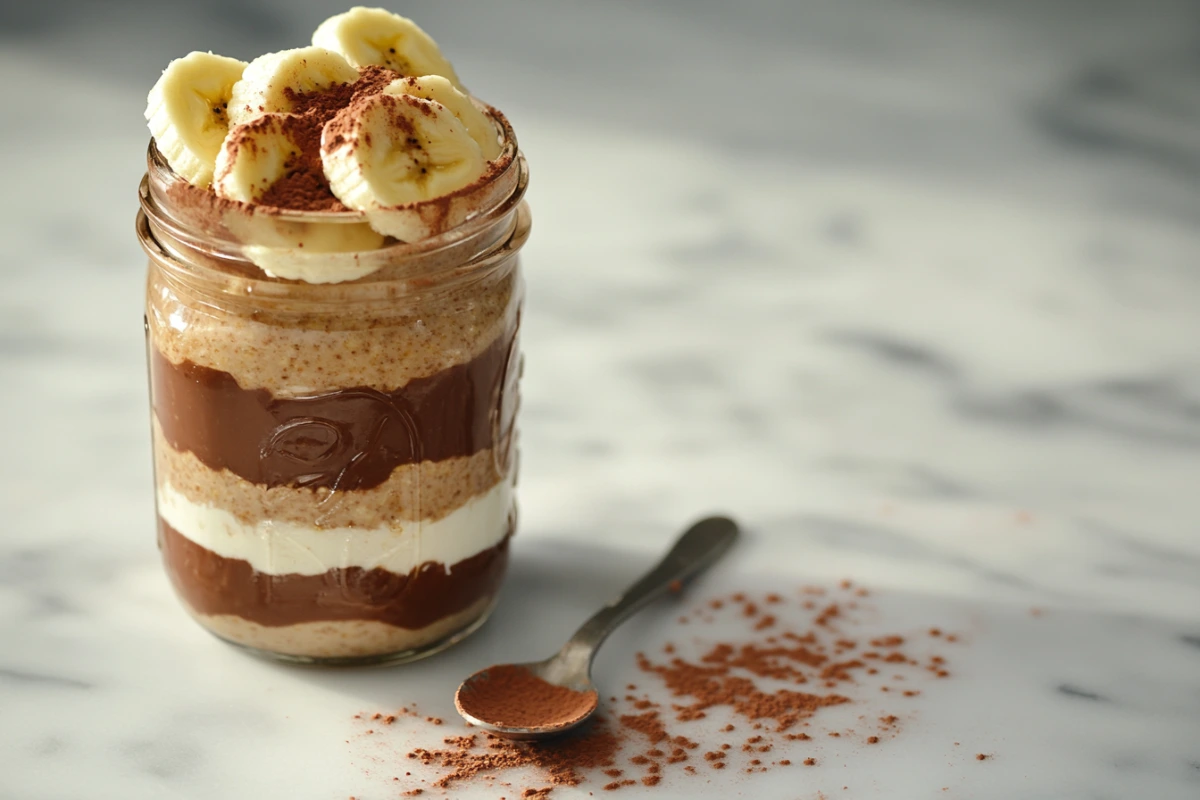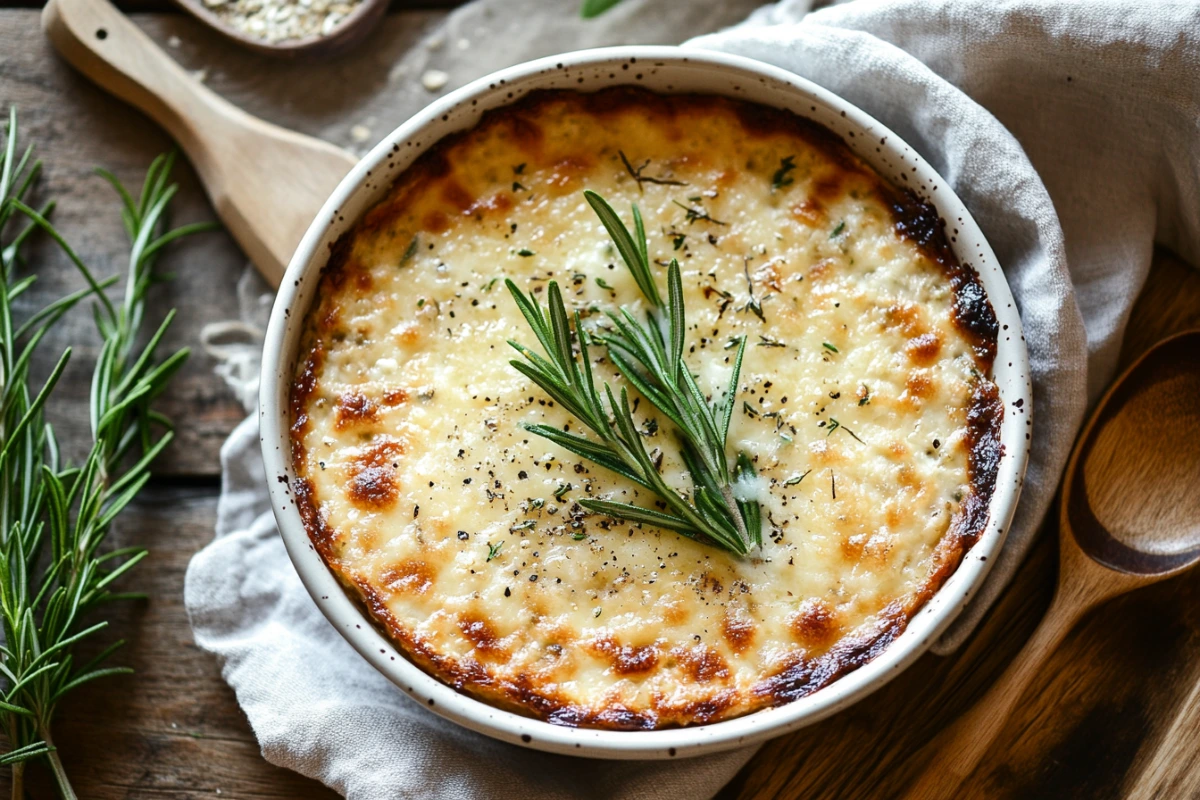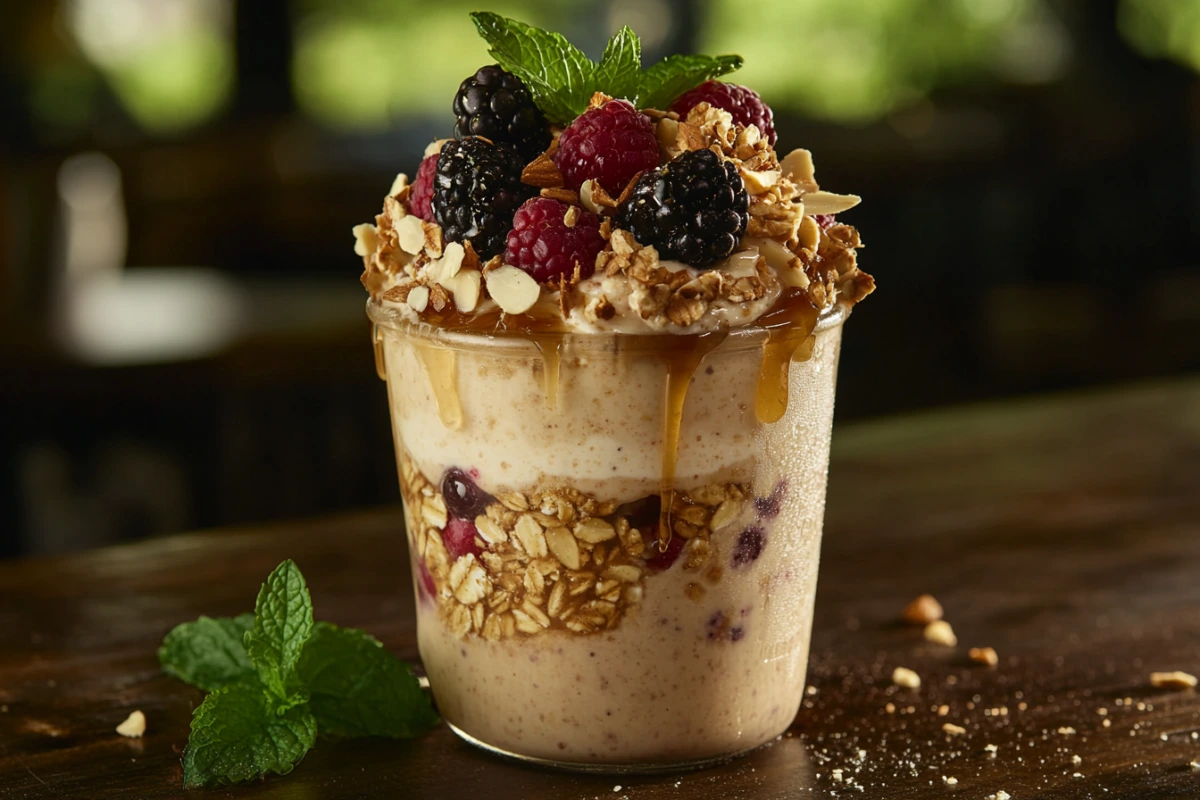Overnight oats have surged in popularity over the years as a quick, healthy, and versatile breakfast option. While many traditional recipes call for yogurt as a key ingredient, there are plenty of reasons to explore yogurt-free variations. Whether you’re looking to accommodate dietary restrictions, experiment with new flavors, or simply enjoy a lighter texture, yogurt-free overnight oats provide a fantastic alternative that doesn’t compromise on taste or nutrition.
In this article, we will delve deeper into the basics of overnight oats, examine why yogurt is a common ingredient in recipes, and explore who can benefit the most from yogurt-free alternatives. So, let’s dive right in!
What Are Overnight Oats Recipe No Yogurt?
Overnight oats provide a convenient, no-cook breakfast solution by soaking oats in a liquid, such as milk, almond milk, or coconut milk, overnight. As a result, this method naturally softens the oats, creating a creamy texture while eliminating the need for cooking. Furthermore, the process is effortless, making it an appealing choice for those with busy schedules.
Usually, the oats are mixed with a variety of ingredients such as fruits, nuts, seeds, and sweeteners. One of the best features of overnight oats is their adaptability. For instance, they can easily be customized to meet diverse taste preferences, nutritional needs, or dietary restrictions. Furthermore, with minimal preparation effort required, they have quickly become a favorite option for busy mornings. In addition, their simplicity makes them an excellent choice for meal prep routines, allowing you to enjoy a nutritious breakfast without hassle.
The Role of Yogurt in Traditional Recipes
Why Yogurt Is Commonly Used
Yogurt is a staple in many overnight oat recipes due to its creamy texture and tangy flavor. It serves multiple purposes:
- Texture enhancer: Yogurt makes overnight oats thicker and creamier.
- Protein booster: It adds protein to the meal, making it more filling and nutritious.
- Flavor balance: Its tanginess complements the sweetness of ingredients like honey, maple syrup, or fruit.
- Probiotic content: Yogurt is rich in probiotics, which support gut health.
For these reasons, yogurt is often considered a go-to ingredient when crafting overnight oats.
The Drawbacks of Using Yogurt
While yogurt has its advantages, it may not be suitable for everyone. Here are some potential drawbacks to using yogurt in overnight oats:
- Dietary restrictions: Those who are lactose intolerant, allergic to dairy, or following a vegan diet cannot consume yogurt.
- Taste preferences: Not everyone enjoys the tangy flavor of yogurt, which can overpower milder ingredients.
- Texture concerns: Some may find yogurt-based oats too heavy or thick for their liking.
- Shelf life: Yogurt doesn’t last as long as other ingredients, which can limit its use in extended meal preps.
For these reasons, yogurt-free variations of overnight oats have become an appealing alternative for many.
Who Will Benefit From a Yogurt-Free Recipe?
Dietary Preferences and Restrictions
A yogurt-free recipe is ideal for individuals with specific dietary needs or restrictions, such as:
- Lactose intolerance or dairy allergies: Removing yogurt ensures the oats are dairy-free, making them safe for those with sensitivities.
- Vegan lifestyles: Plant-based diets exclude dairy products, so yogurt-free recipes open up possibilities for this group.
- Low-sugar diets: Flavored yogurts often contain added sugars. Eliminating yogurt allows for better control over sweetness levels.
By substituting yogurt with other ingredients, such as plant-based milks or nut butters, it’s possible to achieve a satisfying and flavorful result without compromising on dietary requirements.
Alternative Flavors and Textures
For those looking to mix up their morning routine, skipping yogurt can lead to exciting new flavor and texture profiles. Here’s how:
- Lighter consistency: Without yogurt, overnight oats can feel less dense, which some people prefer.
- Enhanced ingredient focus: Flavors from fruits, spices, or sweeteners can shine more prominently without the tangy undertone of yogurt.
- Customizable creaminess: Ingredients like coconut milk, almond butter, or chia seeds can create a creamy texture without the need for yogurt.
This flexibility makes yogurt-free overnight oats an excellent choice for adventurous eaters and those seeking variety in their breakfasts.
How to Make Overnight Oats Recipe No Yogurt

The Basics of Preparing Overnight Oats Without Yogurt
Making overnight oats without yogurt is incredibly simple and flexible. The basic formula involves oats, a liquid of your choice, and optional mix-ins for flavor and nutrition. Here’s how to get started:
- Choose your oats: Old-fashioned rolled oats work best as they absorb liquid well while maintaining a pleasant texture. Avoid instant oats, which can become mushy, or steel-cut oats, which require more liquid and time to soften.
- Select a liquid base: Without yogurt, you’ll rely on liquid to soften the oats. Popular options include:
- Plant-based milk (almond, coconut, soy, or oat milk)
- Dairy milk (for those who aren’t avoiding dairy)
- Fruit juice (for a sweeter twist)
- Add sweeteners and spices: Enhance the flavor with natural sweeteners like honey, maple syrup, or agave, and spices like cinnamon, nutmeg, or vanilla extract.
- Incorporate texture boosters: To replicate yogurt’s creaminess, consider adding:
- Chia seeds: These absorb liquid and thicken the mixture.
- Nut butters: Peanut, almond, or cashew butter add richness and healthy fats.
- Mashed fruits: Bananas or avocado can contribute to a smooth, creamy texture.
- Include mix-ins: Add fruits, nuts, seeds, or chocolate chips for extra flavor and nutrients.
- Combine and refrigerate: Mix the ingredients in a jar or container, cover, and refrigerate overnight. By morning, you’ll have a ready-to-eat breakfast.
Substitutes for Yogurt in Overnight Oats
If you’re used to the creaminess and nutritional benefits of yogurt but need an alternative, here are some excellent substitutes:
- Coconut milk or cream: Offers a rich, creamy texture with a hint of tropical flavor.
- Mashed banana or avocado: Adds natural sweetness and a smooth consistency.
- Silken tofu: A great plant-based protein source that blends seamlessly for creaminess.
- Chia pudding: Mix chia seeds with your liquid base beforehand to create a yogurt-like consistency.
- Cashew or almond cream: Blend soaked nuts with water for a homemade dairy-free cream.
These options allow for endless variations while maintaining the creamy element that yogurt traditionally provides.
Creative Overnight Oats Recipe No Yogurt To Try
To spark inspiration, here are three delicious yogurt-free overnight oat recipes:
1. Tropical Coconut Oats
- Ingredients:
- 1/2 cup rolled oats
- 1/2 cup coconut milk
- 1 tbsp chia seeds
- 1/4 cup diced mango
- 1 tbsp shredded coconut
- Directions:
- Combine oats, coconut milk, and chia seeds in a jar. Mix well.
- Top with mango and shredded coconut.
- Refrigerate overnight and enjoy.
2. Peanut Butter Banana Oats
- Ingredients:
- 1/2 cup rolled oats
- 1/2 cup almond milk
- 1 tbsp peanut butter
- 1/2 mashed banana
- 1 tsp honey
- Directions:
- Stir together oats, almond milk, peanut butter, and mashed banana.
- Drizzle with honey and refrigerate overnight.
- Garnish with banana slices before serving.
3. Berry Almond Delight
- Ingredients:
- 1/2 cup rolled oats
- 1/2 cup unsweetened almond milk
- 1/4 cup mixed berries (strawberries, blueberries, raspberries)
- 1 tbsp almond butter
- 1/2 tsp vanilla extract
- Directions:
- Mix oats, almond milk, and vanilla extract in a container.
- Layer berries and almond butter on top.
- Chill overnight and serve cold.
Tips for Perfect Overnight Oats Recipe No Yogurt

- Adjust the liquid-to-oat ratio: Start with equal parts oats and liquid, but adjust based on your texture preference. More liquid creates softer oats, while less results in a thicker mixture.
- Layer ingredients for variety: Place fruit, nuts, and other toppings between layers of oats for a visually appealing and flavorful experience.
- Experiment with spices: Try cardamom, ginger, or cocoa powder for unique flavor twists.
- Keep it fresh: Store overnight oats in an airtight container in the fridge and consume within 2–3 days.
With these tips and recipes, you’ll have endless options to keep your yogurt-free overnight oats exciting and delicious.
Perfecting Your Yogurt-Free Overnight Oats
Creating delicious overnight oats without yogurt involves striking the perfect balance of ingredients and flavors to achieve a creamy, satisfying result. To begin with, this versatile breakfast offers endless customization options, making it ideal for catering to various tastes and dietary preferences. Moreover, you can tailor it to include your favorite ingredients, whether you’re aiming for a simple or elaborate dish. In the following steps, we’ll guide you through a detailed recipe, outline common pitfalls to avoid, and suggest creative variations to keep your morning meal both exciting and nutritious. By the end of this guide, you’ll have all the tools to elevate your breakfast game effortlessly.
Basic Ingredients and Proportions
Here’s a simple base recipe to get you started:
- 1/2 cup rolled oats: Provides the foundation of the dish. Opt for old-fashioned oats for the best texture.
- 1/2 to 2/3 cup liquid: Choose from almond milk, soy milk, coconut milk, or even plain water.
- 1–2 tsp sweetener: Honey, maple syrup, agave nectar, or stevia work well.
- Optional thickener: Add 1 tbsp chia seeds, mashed banana, or nut butter for creaminess.
Mix these ingredients in a jar or container, cover, and refrigerate for at least 6 hours or overnight.
Customizing Your Flavor Profile
Sweeteners, Spices, Fruits, and Nuts
Customizing your oats is where the excitement truly begins, as this step allows for endless creativity. Moreover, you can easily incorporate your favorite mix-ins to craft a flavor that perfectly suits your taste buds. To give you some inspiration, here are a few suggestions to get started:
- Sweeteners: Brown sugar, date syrup, or fruit purees.
- Spices: Cinnamon, nutmeg, vanilla, or cocoa powder.
- Fruits: Fresh berries, diced apples, mango, or dried fruits like raisins or cranberries.
- Nuts and seeds: Almonds, walnuts, sunflower seeds, or pumpkin seeds for crunch.
Adding Protein or Superfood Boosts
To make your oats more nutritious, consider these additions:
- Protein powder: Mix a scoop of your favorite protein powder with the liquid base.
- Nut butters: Peanut, almond, or cashew butter adds healthy fats and a protein kick.
- Superfoods: Chia seeds, flaxseeds, hemp hearts, or a sprinkle of matcha for added benefits.
Common Mistakes and How to Avoid Them
Balancing Consistency and Texture
- Too runny or thick: Stick to the suggested liquid-to-oat ratio and adjust based on preference. Add a splash of liquid in the morning if the oats feel too dry.
- Mushy texture: Avoid instant oats, which can turn to mush. Rolled oats provide the ideal texture.
Preventing Undesirable Flavors
- Bland oats: Always include a sweetener or flavorful mix-ins to ensure a satisfying taste.
- Overpowering ingredients: Balance strong flavors like cinnamon or nutmeg by starting with small amounts and adjusting.
Real-World Variations to Try
Fruity Overnight Oats Without Yogurt
- Ingredients:
- 1/2 cup rolled oats
- 1/2 cup almond milk
- 1/4 cup fresh berries (blueberries or raspberries)
- 1 tsp honey
- Instructions: Combine oats, milk, and honey. Top with berries before serving.
Chocolate Peanut Butter Oats
- Ingredients:
- 1/2 cup rolled oats
- 1/2 cup soy milk
- 1 tbsp peanut butter
- 1 tsp cocoa powder
- 1/2 mashed banana
- Instructions: Mix all ingredients. Refrigerate overnight and garnish with banana slices.
Savory Herb and Cheese Oats
- Ingredients:
- 1/2 cup rolled oats
- 1/2 cup vegetable broth
- 1 tbsp grated Parmesan cheese
- 1/2 tsp mixed Italian herbs
- Salt and pepper to taste
- Instructions: Combine oats and broth. Stir in cheese and herbs before serving.
Final Thoughts and Tips
Storing and Serving Your Overnight Oats Recipe No Yogurt
- Storage: Store overnight oats in an airtight container for up to three days. This makes them perfect for meal prep.
- Serving: Enjoy them cold straight from the fridge or warm them slightly for a cozier option.
Tools and Resources for Inspiration
- Tools: Mason jars, reusable containers, or meal prep bowls with lids are perfect for storing oats.
- Resources: Check out food blogs, recipe websites, or apps like Pinterest for creative inspiration.
FAQ
Can I Use Steel-Cut Oats for Overnight Oats Recipe No Yogurt?
Yes, steel-cut oats can be used for overnight oats, but they require some adjustments. Unlike rolled oats, steel-cut oats have a chewy texture and take longer to soften. To prepare them, use 1.5 to 2 times the liquid typically used for rolled oats and soak them for at least 12–24 hours. Adding a splash of milk or a plant-based alternative before serving can enhance their creaminess.
What Is the Best Liquid for Creamy Overnight Oats Without Yogurt?
For a rich and creamy texture, coconut milk is an excellent choice. It provides a natural sweetness and subtle tropical flavor. Almond milk is another great option, offering smoothness while keeping the dish light. Nut-free alternatives like oat milk or cashew milk are also ideal for achieving a velvety consistency.
How Long Do Overnight Oats Last in the Fridge?
Properly stored in an airtight container, overnight oats can last up to three days in the refrigerator. For optimal taste and texture, consume them within two days. Be cautious when adding fruits like bananas or berries, as they may become mushy over time.
Can I Make Savory Overnight Oats Recipe No Yogurt?
Absolutely! Savory overnight oats are a creative twist on the classic. Replace sweeteners with vegetable broth or unsweetened almond milk. Add herbs such as thyme, chives, or parsley, and top with ingredients like shredded cheese, roasted vegetables, or a poached egg for a hearty meal.
Are Overnight Oats Eaten Cold or Hot?
Overnight oats are traditionally enjoyed cold for a refreshing breakfast or snack. However, they can also be heated in the microwave or on the stovetop with a splash of milk, making them versatile for any preference.

